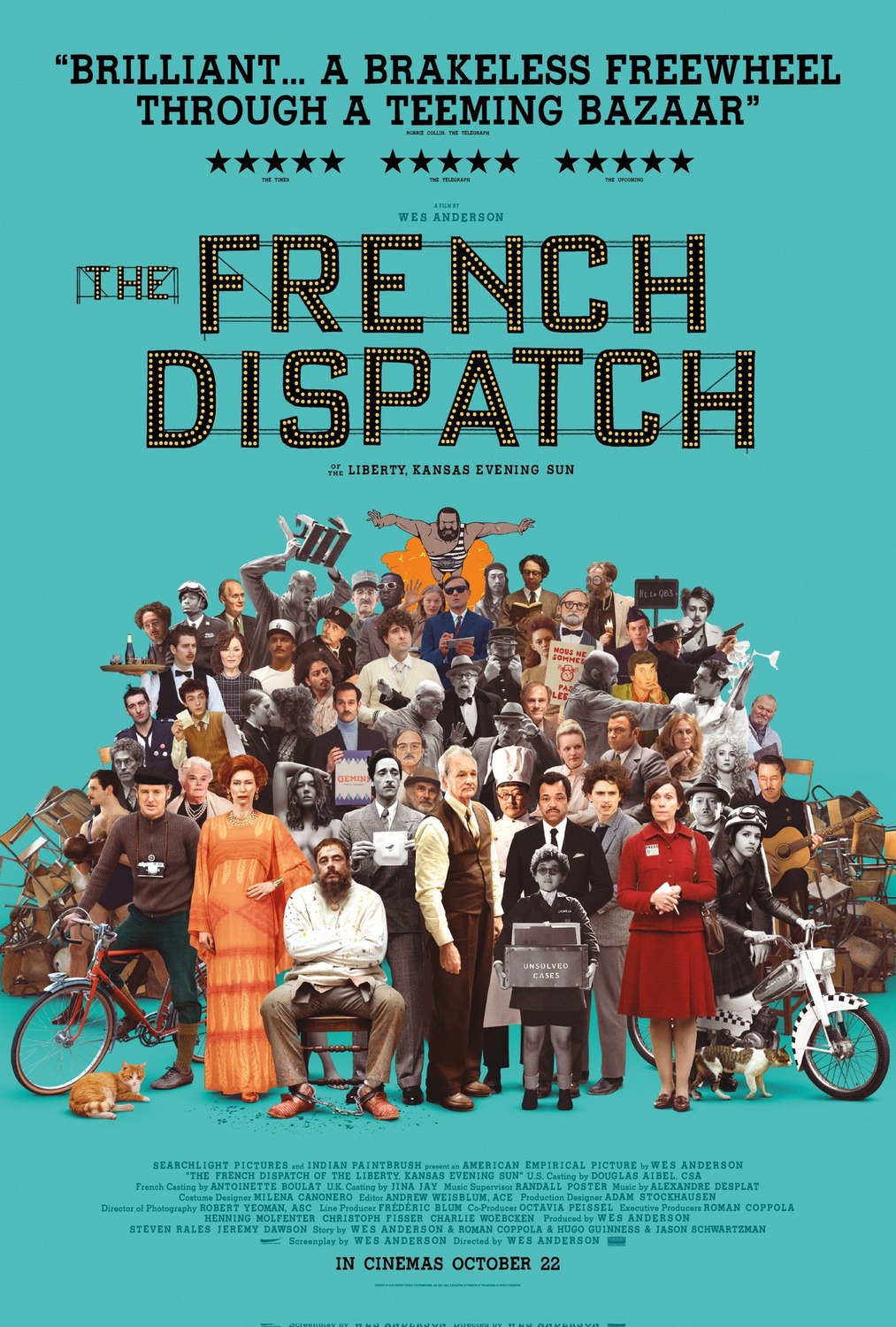Review: The French Dispatch
By Marrla Ferrer, Contributing Writer
Wes Anderson’s latest film, “The French Dispatch of the Liberty, Kansas Evening Sun,” is relatively short—only an hour and forty-eight minutes—but it is a fast-paced film that takes the audience on a journey through time through the eyes of journalists. Billed as a “love letter to journalism,” the movie’s style may make sense to fans familiar with Wes Anderson’s previous work. However, it could take a while for the everyday audience to settle into the film. I found it a little overwhelming at times, because so much was packed into so little time.
I loved the aesthetic of the film; I feel like it was the bread and butter that held everything together. However, I must admit I found it quite odd at first. As the film jumped frequently and without warning from the past to the present, often with unclear transitions, it was a bit hard to keep up with what was going on.
For example, it took me a while to notice that the movie was actually an anthology of three completely different yet significant stories: “The Concrete Masterpiece,” “Revisions to a Manifesto,” and “The Private Dining Room of the Police Commissioner.” The way it moved from story to story made me think that each chapter was going to be a continuation of the next one, or that they would be tied together somehow, especially because there are stylistic commonalities among all three stories. However, that was not the case. Each story was very unique.
When I did finally start paying attention to the title of each story, I tried to use them to predict each story. That did not work. Anderson plays clever mind games with the viewer with the titles of the stories within this anthology. It’s not that the titles he picks for each story do not make sense—they do—but the viewer will not understand them until after the story is told. The only thing that the audience knows for certain is that the story will steadily unfold. Whatever is not revealed at the beginning of the story slowly becomes more clear as the movie progresses, but does not truly make sense till the end of the film.
Anderson uses quite a bit of symbolism in “The French Dispatch.” One aspect that was prevalent is the significance of black and white and the contrast to things that are in color. In the film, it looked like he used black and white to symbolize the past and color to talk about the future. I also feel like the different shades of colors represent different things. As the detail-packed movie continues, an unprepared audience member might feel lost about where Anderson is going with this movie and realize that there are many hidden layers under the surface waiting to be unpacked. I have a feeling that each subsequent watch would reveal more of these marvelous little layers.
Something I greatly enjoyed about the movie was the cinematography. The cinematography of the movie gave it a unique old yet modern aesthetic that is influenced by both American and French culture. Nevertheless, the cinematography was impeccable and paired really well with the subtle humor of the actors and actresses in each scene. Throughout the movie, Anderson meticulously includes the little details: a blurry background, the actor’s outfits, themes that are unsaid yet linger between the lines in every shot. So compelling is the cinematography that I felt as though I would regret every frame missed during a blink.
In the end, the movie comes together. Anderson deftly blends complexity and chaos in ways that one would not even believe is imaginable. This film will be greatly appreciated by Wes Anderson fans, but for the more casual viewers the film may likely be something less than mind-blowing. People that are not familiar with Anderson’s style might have a hard time understanding the logic of the movie, especially because of its pace and complexity. The runtime might be short, but certain parts of the movie did drag, particularly in the second and third stories. This also the everyday audience may find a bit bothersome. Overall, I feel like even though it might not be everyone’s cup of tea, “The French Dispatch” is aesthetically pleasing and worth the watch— and it may even be the kind of film worth watching more than once.

